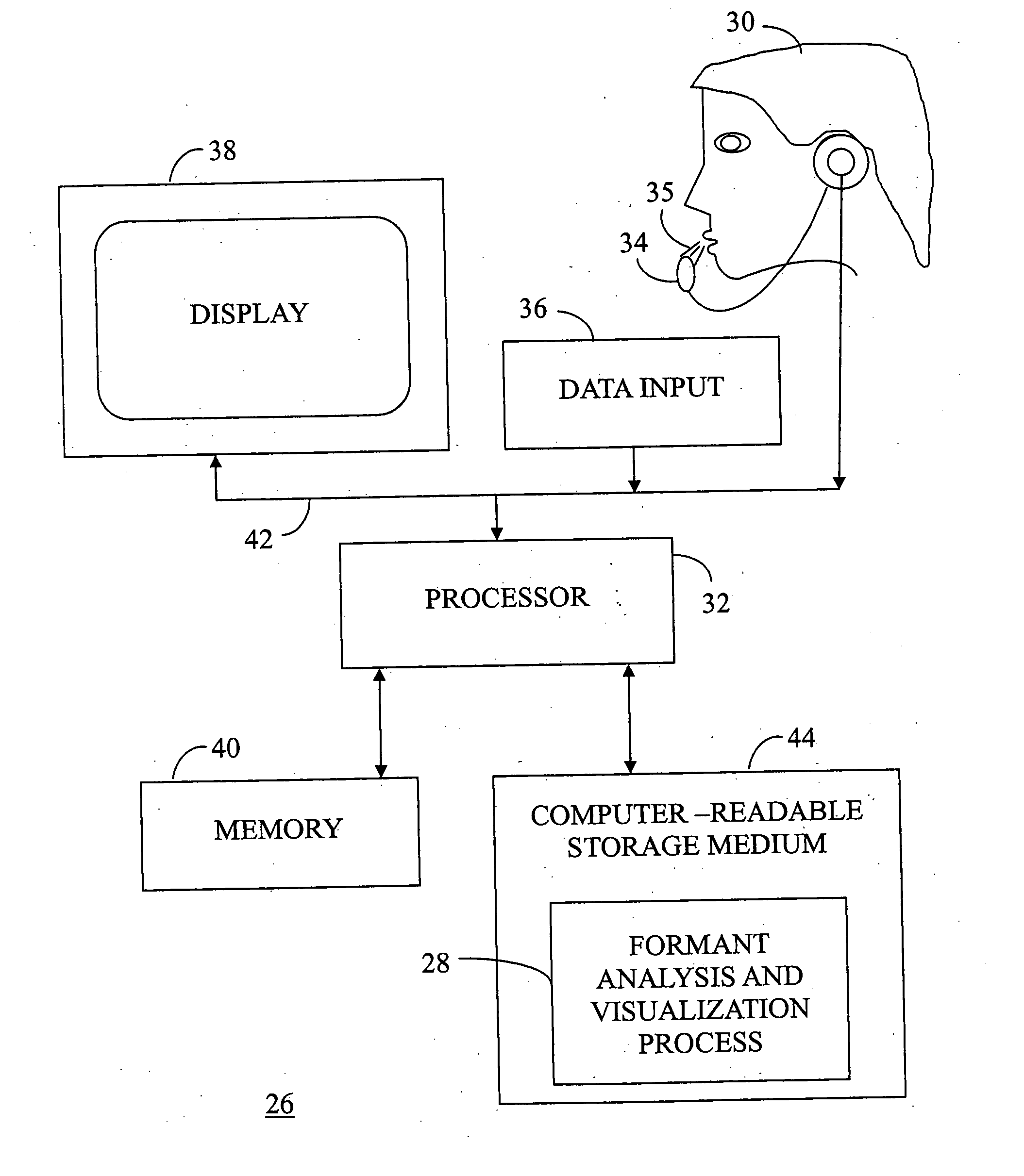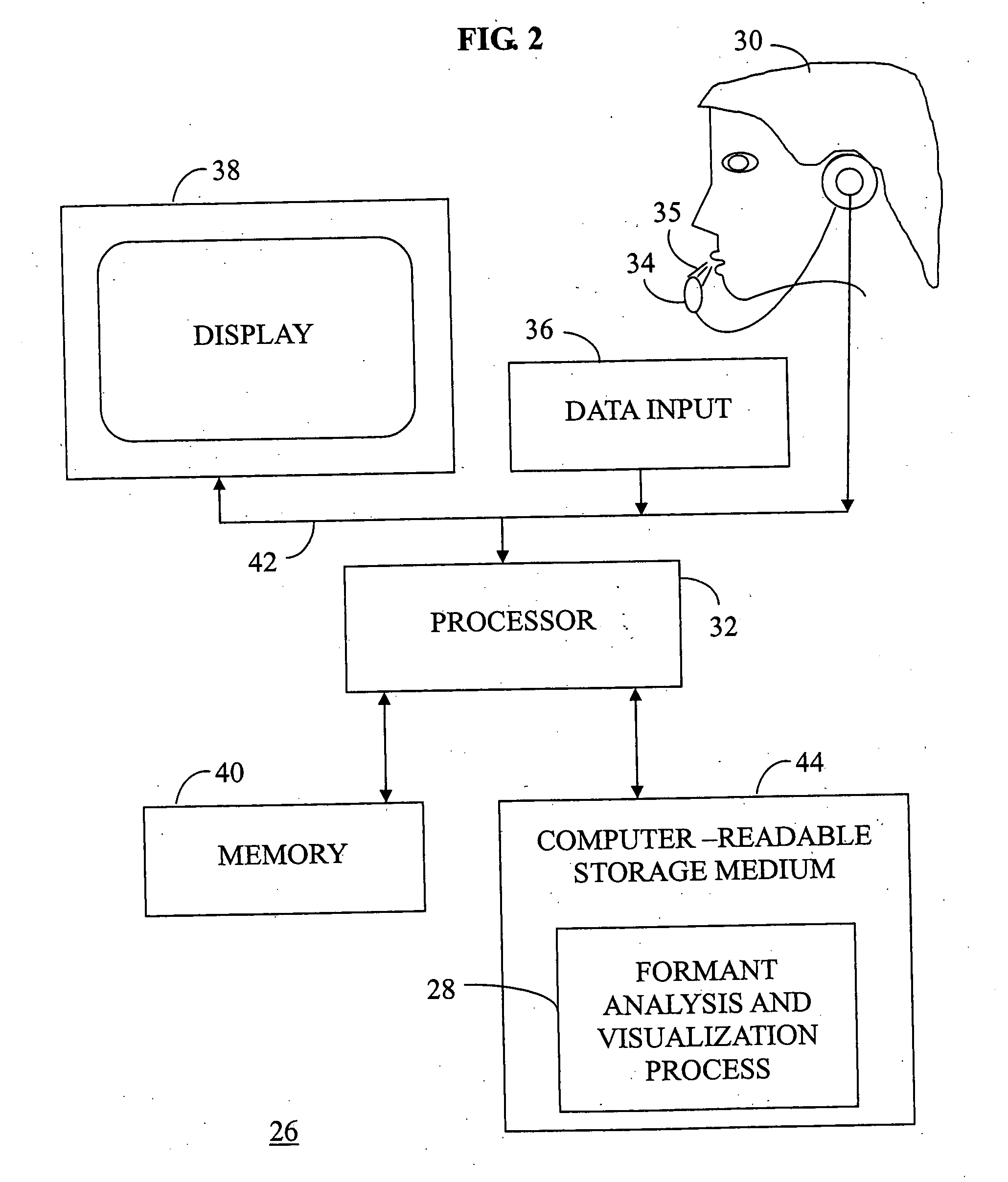Real time voice analysis and method for providing speech therapy
a speech therapy and real-time voice technology, applied in the field of speech therapy, can solve the problems of difficult speech learning for any person with impaired hearing, difficult for deaf people, and difficult for anyone with impaired hearing, and achieve the effect of enhancing the learning of vowel sounds and being readily portabl
- Summary
- Abstract
- Description
- Claims
- Application Information
AI Technical Summary
Benefits of technology
Problems solved by technology
Method used
Image
Examples
Embodiment Construction
[0039] The present invention entails formant analysis and visualization code executable on a conventional computing system and methodology for providing speech therapy to a learner utilizing the computing system. The invention focuses on formants which are the acoustically distinguishing components in spoken vowels. The present invention overcomes the problems of prior art speech therapy techniques and devices through analysis and visual displays that can isolate and demonstrate deviations in the frequency components of abnormal vowels.
[0040] The learner may be a child or adult of either gender, and may be hearing impaired or have another physical and / or cognitive deficit resulting in difficulty with verbal communication. The term “hearing impaired” used herein refers to those individuals with any degree of loss of hearing, from minor to those with severe or profound hearing loss. Persons with impaired hearing will be used to illustrate the advantages of the present invention. Howe...
PUM
 Login to View More
Login to View More Abstract
Description
Claims
Application Information
 Login to View More
Login to View More - R&D
- Intellectual Property
- Life Sciences
- Materials
- Tech Scout
- Unparalleled Data Quality
- Higher Quality Content
- 60% Fewer Hallucinations
Browse by: Latest US Patents, China's latest patents, Technical Efficacy Thesaurus, Application Domain, Technology Topic, Popular Technical Reports.
© 2025 PatSnap. All rights reserved.Legal|Privacy policy|Modern Slavery Act Transparency Statement|Sitemap|About US| Contact US: help@patsnap.com



